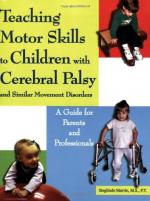|
This section contains 1,002 words (approx. 4 pages at 300 words per page) |

|
A permanent motor disability caused by brain damage associated with birth.
Cerebral palsy (CP) results from head injury after birth. The primary effects of cerebral palsy range from mild impairment of movement of one part of the body to severe impairment of most gross and fine motor functions. CP can also cause sight and hearing impairments, problems with depth perception and balance, learning disabilities, and mental retardation. Motor problems associated with CP often impair a person's ability to walk, talk, eat, breathe, speak, and control bladder functions, and he or she must receive significant support to perform the daily functions of living.
Cerebral palsy occurs in about 2.5 of every 1,000 live births, so that between 500,00 and 750,000 people in the United States have the disorder. In 30-75% of cases the original cause is unknown. Many birth-related problems associated with CP, such as German measles, RH incompatibility, and asphyxiation...
|
This section contains 1,002 words (approx. 4 pages at 300 words per page) |

|


